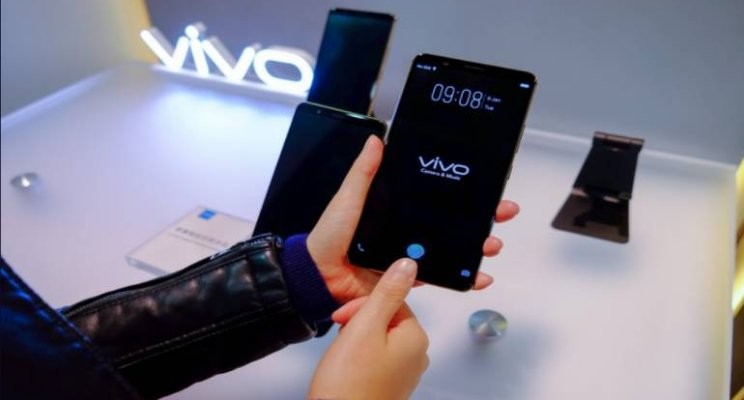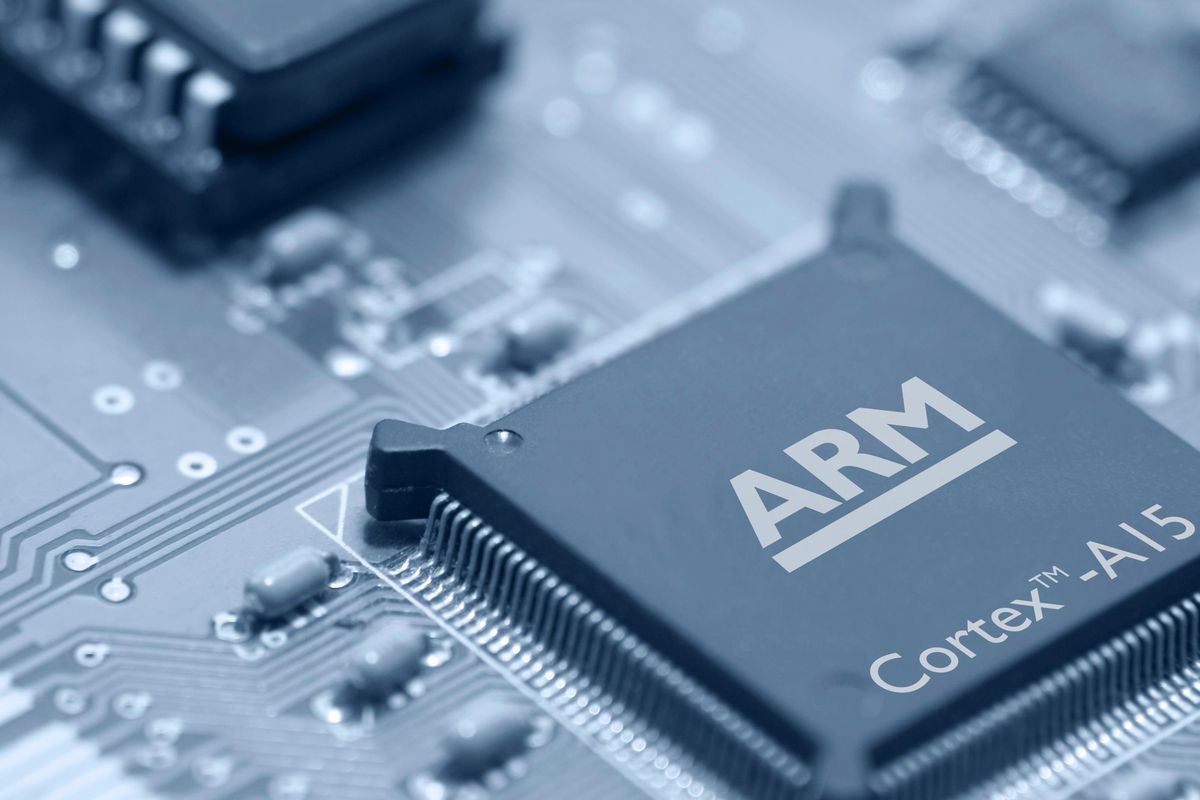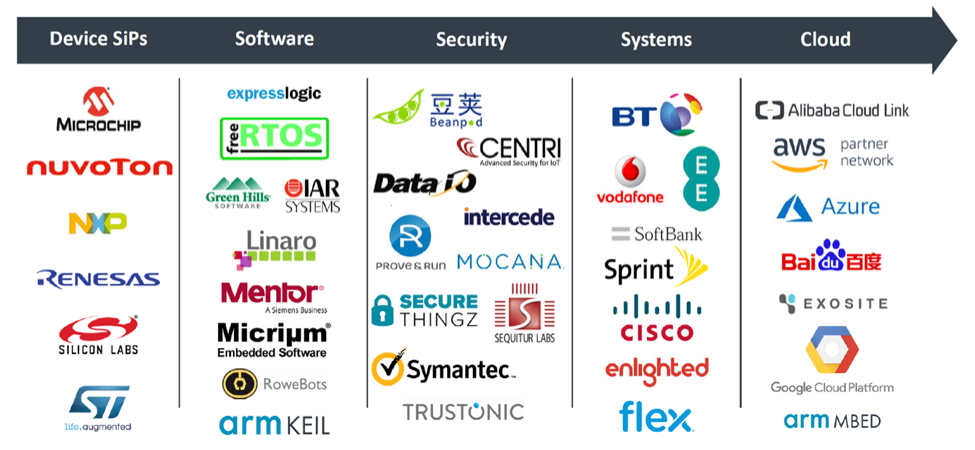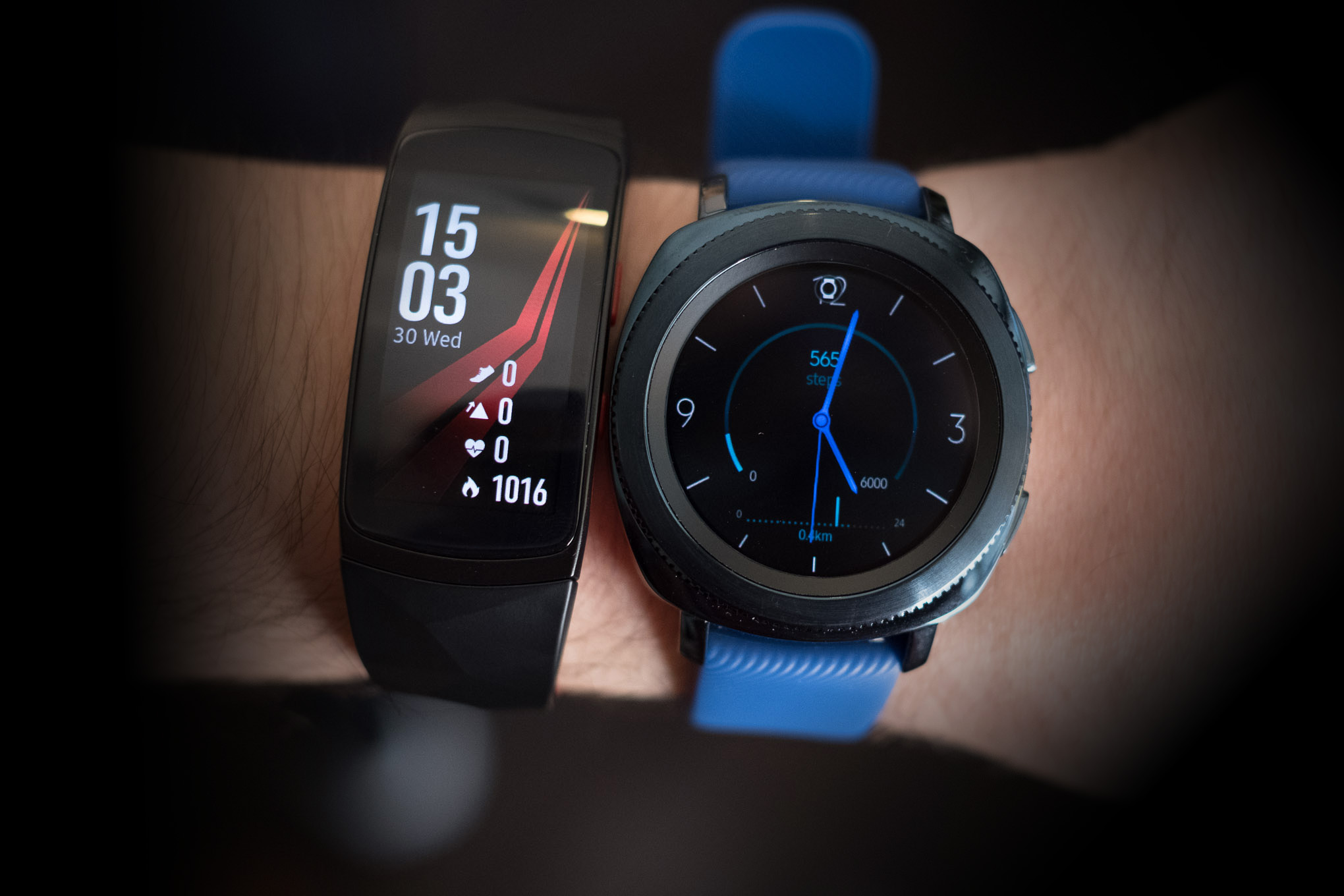


A New Hope for IoT Security?
With the constantly rising number of connected devices also rises the number of IoT-based cyber-attacks, such as when the Mirai botnet launched one of the largest and most powerful distributed denial of service (DDoS) attacks on DNS provider Dyn and its customers, temporarily rendering services like Twitter, Reddit, and Spotify inaccessible.The situation has become so bleak that the US Congress even proposed an Internet of Things Cybersecurity Improvement Act to force the manufacturers of connected devices, such as webcams, printers, light bulbs, or home routers, to comply with what the regulators call minimal cybersecurity operational standards for IoT devices.
Currently, statistics show that there are approximately 20 billion connected devices worldwide, and some, such as ARM and SoftBank Chairman Masayoshi Son, expect a trillion connected devices by 2035. But unless IoT security fundamentally improves, we could be headed toward what can only be described as IoT apocalypse.
“These attacks have highlighted the very real need for better security measures to be implemented, throughout the value chain of connected devices, covering high-level infrastructure, such as energy supply and connected vehicles to low-cost devices, such as webcams and smart lighting. Breaches in security present a host of issues for those operating in the IoT. Leaks in confidential information, theft of personal data, a loss of control of connected systems and the shutting down of critical infrastructure, all represent major areas at risk,” states ARM on its community blog.
Considering how many IoT devices are built on the ARM architecture, which is known for its remarkable efficiency, and considering that the British multinational semiconductor manufacturer expects to have shipped 200 billion ARM-based chips by 2021, it’s easy to see why ARM might be interested in taking IoT security into their own hands to ease some of the concerns legislators and the general public already have.
Recently, almost exactly a year after Masayoshi Son announced his vision for a trillion connected devices by 2035 at Arm TechCon, ARM announced its open source Platform Security Architecture (PSA), which is described as an holistic set of threat models, security analyses, hardware and firmware architecture specifications intended to serve as a secure foundation for connected devices.
Some of the biggest names in the industry are already supporting PSA, including Google, Microsoft, Cisco, Vodafone, Symantec, SoftBank, and Alibaba, just to name a few.

According to Paul Williamson, vice president and general manager of IoT Device IP at ARM, “The growing number of devices being connected to the internet need to be secure without sacrificing the very diversity which make them innovative and unique. ARM chief system architect Andy Rose and his team made sure this was top of mind when developing PSA through analysis of devices and best practices for securing them.”
As such, PSA delivers hardware and firmware architecture specifications, built on key security principles, defining a best practice approach for designing endpoint devices and a reference open source implementation of the firmware specification, called Trusted Firmware-M, which is designed to work with the company’s ARMv8-M processor architecture. Trusted Firmware-M is scheduled for release in early 2018.
According to Naked Security, Trusted Firmware-M makes possible:
- A proper root of trust.
- A protected crypto keystore.
- Software isolation between trusted and untrusted processes.
- A way of securely updating firmware.
- Easy debugging down to chip level.
- A reliable cryptographic random number generator.
- On-chip acceleration to make crypto run smoothly.
Considering how many major industry players already stand behind ARM’s effort, it seems that the release of Trusted Firmware-M in early 2018 could be the tipping point that so many of those who have been preaching about the growing need for improved IoT security have been waiting for.
The last few years proved that IoT vendors cannot be relied on when it comes to securing their products as the entire world witnessed the consequences of poor security practices such as including weak default passwords in hardware or never releasing security updates to patch critical vulnerabilities.
ARM’s bottom-up approach to IoT security seems like the only reasonable way to go at this point, providing a strong incentive for IoT vendors to build their products using ARM’s cost-effective, scalable, easy-to-implement security framework.
“The value of the ARM ecosystem is to provide diversity and choice to end-customers, and this benefit extends to the IoT and its broad range of technologies and providers. ARM recognizes this potential, alongside the risks that threaten the devices, systems, and infrastructures operating within the IoT. PSA provides the common framework for the ecosystem, from chip designers and device developers, to cloud and network infrastructure providers and software vendors,” states ARM.

The Emerging Category of Invisible Devices
According to the International Data Corporation (IDC), 102.4 million wearable devices were shipped in 2016, and the wearable market is expected to double by 2021. But one wouldn’t have guessed that the popularity of wearables is on the rise after attending the 2017 GSMA Mobile World Congress, which is a combination of the world’s largest exhibition for the mobile industry and a conference featuring prominent executives representing mobile operators, device manufacturers, technology providers, vendors, and content owners from across the world.The winner of the Best Wearable category at MWC 2017 was the Huawei Watch 2, which is a sporty smartwatch aimed predominantly at men. While excellent in many ways, the Huawei Watch 2 isn’t exactly a groundbreaking departure from all other bulky sports smartwatches, which have been dominating the wearable world for the past few years.
The Huawei Watch 2 feels like a wearable piece of technology first and a watch second. Even people who are used to wearing a watch all the time might find it difficult to get used to the extra weight or the daily charging, not to mention the complicated synchronization with other devices. That might explain why fewer consumers use their wearables daily over time, as stated in a report from PwC. Wearables simply still feel too unnatural to become habitual or part of our daily routines.
“I don’t know about you, but when I’m adorning myself with wearable technology, I like it to feel natural. By that, I mean seamlessly integrated, so instead of being conscious that I’m wearing tech, I ideally want to reap the added bonus that it brings while not wearing any additional item: invisible, perhaps,” summarizes the problem Forbes contributor Lee Bell.
Thankfully, it seems that the wearable industry has recognized the need for seamlessly integrated wearables because a new category of smart gadgets is emerging, and the name of this category is “invisibles.”
As the name suggests, invisibles are so well-integrated that the users are not even aware of them unless they are actively taking advantage of the features they provide. Even though most invisibles that are currently available still focus mainly on the fitness market, there have already been several releases of invisible wearables that do other things besides heart rate monitoring.
Under Armour Gemini 3 RE Smart Shoes
The Under Armour Gemini 3 RE are smart shoes with a built-in motion sensor that tracks, analyzes, and stores virtually every running metric, synchronizing wirelessly with the UA MapMyRun smartphone application. The shoes can take advantage of a smartphone’s GPS sensor for even more comprehensive tracking, but they can also work on their own. Besides being packed with advanced electronic components, the Under Armour Gemini 3 RE also feature the innovative UA SpeedForm construction molds to the foot for a precision fit and the Threadborne midfoot panel for distinct style and enhanced ventilation. The shoes are available for $119.99 in two colors through Under Armour’s official website.Nokia Steel HR
Most modern smartwatches have one thing in common: they don’t look like traditional watches. They either fall into the same category of fitness-oriented products as the aforementioned Huawei Watch 2, or they go for the elegantly futuristic look of the Apple Watch. The Nokia Steel HR smartwatch is different, though. Featuring a traditional watch movement along with a small LCD display, the Steel HR shows all the information you might expect a smartwatch to show, including heart rate, number of steps, distance, calories burned, and alarm time, but without the annoying need for daily charging. The watch is also water resistant up to 50 meters and comes with a stylish black watchband that makes it look just as good when worn with jeans as it does with dress pants.JBL UA Sport Wireless Heart Rate Headphones
Under Armour have teamed up with audio experts JBL to produce a pair of wireless fitness-oriented headphones with a built-in heart rate monitoring functionality. Thanks to the ability of the JBL UA Sport headphones to monitor heart rate, users can receive updates for things like pace, distance, and heart-rate zones without looking at the display of a smartphone or smartwatch, which can be distracting and sometimes even impossible when in the zone. The heart rate monitoring functionality aside, the JBL UA Sport headphones offer excellent sound quality, good seal, and maximum comfort for daily listening. The headphones are water and sweat resistant, as fitness headphones should be, and they last up to 5 hours with audio and heart rate enabled on a charge.Myontec Mbody Connected Shorts
The Myontec Mbody connected shorts boast the most comprehensive and advanced training system available, featuring an array of sensors that capture heart rate, cadence, speed, distance, and other conventional performance. The sensors can also perform muscle overload analysis, determine training readiness based on warm-up monitoring, and analyze for imbalance and injury prevention. The shorts have been designed with the needs of cyclists, duathletes, and triathletes in mind, which is reflected in the use of 3D elastic compression textile by Carvico Revolutional, a leader in the national and international textile market. Unlike conventional sports shorts, the Myontec Mbody can be connected to a smartphone via Bluetooth and paired with the Mbody Live app, which is available for iOS and Android.Coros LINX Smart Bicycle Helmet
Modern cycling helmets already do many things to make cycling safer and more enjoyable, but they don’t help cyclists maintain a sharp focus on the road ahead. Every year, thousands of cyclists suffer serious and sometimes even fatal injuries because they use a smartphone for GPS navigation and communication. The Coros LINX smart helmet features wireless connectivity, allowing cyclists to wirelessly connect their helmet to their smartphone to listen to their own music, take phone calls, talk to fellow riders, and hear navigation and ride data through the helmet’s open-ear Bone Conduction Technology and a precision wind-resistant microphone. The helmet is available in four colors and two sizes.Levi’s Commuter Trucker Jacket
Levi’s Commuter Trucker Jacket is the first mass-produced article of clothing to feature Jacquard by Google, the first full-scale digital platform created for smart clothing that allows clothing manufacturers to add a new layer of connectivity and interactivity to everything from jackets to shoes to bags. In the case of the Levi’s Commuter Trucker Jacket, touch-sensitive fabric is woven into the sleeve, and the remaining electronic components are incorporated into the design of the jacket in such a way that the jacket is washable and virtually indistinguishable from ordinary jackets. When paired with a smartphone, the touch-sensitive sleeve makes it possible to control music, navigation, or phone calls.Conclusion
Together, all the invisible wearables described above demonstrate that consumers are interested in modern technology and its numerous benefits, but want to get them in a form that more seamlessly fits into their daily lives. As companies continue to develop new, more advanced textiles and sensors, we will likely see a boom of invisibles and the emergence of many never-before-seen smart products.
Machine-to-Machine (M2M) Communications and IOTA
Humans are not the only users of the Internet. Billions of machines need to deliver and process information in real time, and the Internet allows them to do just that. In 2011, the machine-to-machine (M2M) market was worth $200 billion, and the latest Machina Research report predicts that it will grow to $1.2 trillion by 2022. The question is what’s behind this growth and how does the future of machine-to-machine communications look like.Machine-to-Machine Communications in the IoT Era
Originally, the term machine-to-machine communication referred to two machines exchanging data without human interaction. Examples of such machines include industrial sensors, power switches, and various interconnected pieces of our modern infrastructure.Over time, machines have gained the ability to communicate wirelessly and become exponentially more capable. They’ve also taken on new roles and moved from warehouses and manufacturing facilities into our homes and offices. This shift is most notably reflected in the emergence of the term Internet of Things, or IoT.
The terms M2M and IoT are very similar to each other in their meaning, but IoT conjures up the image of Internet-enabled smart devices, such as light bulbs and thermostats, accessible via smartphone apps and producing heaps of data transmitted to the cloud for analysis. Most importantly, IoT devices are user-oriented, whereas many machines participating in machine-to-machine communication are often meant to interact only with one another.
The Rise of Machine Economy
As the number and the complexity of Internet-connected devices increases, a fascinating vision of a future where machines not only communicate with one another over the Internet but also trade resources emerges.In this new machine economy, a security system could autonomously purchase cloud computational capacity or storage space as needed, and an electric smart car could automatically charge from the grid without ever bothering the owner with low-battery alerts.
“Imagine you’re on the tennis court and your smart racket notices that your tennis balls have lost inflation. The racket, which has been tracking your swing performance and sending the data to your smart devices, decides to order and pay for three more balls from the auto-roving ball dispenser. Your device also determines that the auto-rover is using your favorite open source code, so it makes a small extra donation to the rover to help support future development via smart contract,” imagines how machine economy could look like in practice Russell Moore, an innovation director at TSYS and an advisor for the Technology Association of Georgia.
IOTA as the Currency of Machine Economy
All this communication and transactions exchanges between machines will need to happen in real-time, with zero fees, and in a secure fashion. That’s where IOTA, a new cryptocurrency that focused on M2M transactions, comes in.IOTA offers an infinitely scalable distributed ledger, called Tangle, that enables zero-cost transactions in real-time and even when offline. Machines can connect to this ledger to “trade exact amounts of resources on-demand, as well as store data from sensors and data loggers securely and verified on the ledger,” IOTA developers explain on the official website.
“While the whole world has adopted the ‘sharing economy’ in areas like driving and accommodation, IOTA enables a whole new realm where anything with a chip in it can be leased in real time. Most of our belongings stay idle for the vast majority of time that we possess ownership of it, but through IOTA a lot of these things like appliances, tools, drones, e-bikes, etc. and resources such as computer storage, computational power, Wi-Fi bandwidth, etc. can be turned into leasing-services effortlessly.”
Whether IOTA’s vision of the future is exciting or frightening is up to every individual to decide, but the fact is that it’s coming faster than many experts would imagine just a few years ago. In fact, the infrastructure is already here and working. Now it’s up to developers and the manufacturers of smart devices to build on it.

Wearable Trends at IFA 2017
IFA (Internationale Funkausstellung Berlin) is one of the oldest industrial exhibitions in Germany and the biggest tech show in Europe. This year’s IFA hosted 1,805 exhibitors, who occupied over 1.7M square feet of the sold-out show floor. From ground-breaking innovations to highly anticipated product launches, IFA’s visitors had the opportunity to get a glimpse into the near future of digital lifestyle products in one place, and tech companies were able to demonstrate which trends they see as important.“Fitness wearables have become the norm in the shortest space of time, providing a perfect example of how quickly technologies can transform our lives,” said Alexander Zeeh, Samsung’s director of home appliances. “This is exactly what our motto for this year’s IFA expresses: ‘the new normal’ … Samsung has been actively working to shape this trend for five years now with new innovations such as our Samsung Gear smartwatches.”
Judging by the large number of product launches of wearable devices at IFA 2017, Samsung isn’t the only company that sees things this way. In fact, the wearables market is predicted to be worth $25 Billion by 2019 by the industry analyst firm CCS Insight. As we go over the most important wearable devices that were launched at IFA 2017, notice that all of them fit into the lifestyle product category, with a clear orientation toward sports and health.
Samsung Gear Fit Pro 2
The Samsung Gear Fit Pro 2 is a relatively thin and narrow smart band with a vibrant, 1.5-inch AMOLED display. The target audience of this product are swimmers, who, along with clumsy individuals, are likely the only people who will benefit from the band’s 5 ATM water resistance, which allows the Gear Fit Pro 2 to withstand depths of up to 50 meters. The band can even automatically detect when it’s underwater and switch to Water Lock Mode to prevent water bubbles from interacting with the touch display.Of course, Samsung didn’t forget about terrestrial athletes when designing the Gear Fit Pro 2. The built-in GPS sensor provides accurate location tracking, and the heart rate monitor on the back of the band offers continuous heart rate monitoring throughout the day and when exercising or playing sports.
The Gear Fit Pro 2 has a speedy dual-core CPU clocked at 1 GHz, 512 MB of memory, and 4 GB of storage space. It runs on Samsung’s open source operating system based on the Linux kernel, Tizen, and supports Spotify offline playlists. The 200 mAh battery lasts several days in standby mode and one or two days when used moderately often.
The Samsung Gear Fit Pro 2 band is now available for pre-order for $200.
Samsung Gear Sport
While the Samsung Gear Fit Pro 2 will appeal mostly to fitness enthusiasts and people who train every day, the Samsung Gear Sport is Samsung’s latest attempt to capture the smartwatch market as a whole. The design of this smartwatch is a well-executed mix of a timeless, semi-round, metal watch face with a durable and water resistant 20 mm nylon band, which suggests that the Gear Sport isn’t afraid of water. In fact, the smartwatch can survive up to 50 meters deep under water, under the ISO standard 22810:2010.The Gear Sport helps users make the most out of every opportunity to exercise and reach various fitness goals. “When you’re on an airplane, Gear Sport adjusts accordingly, suggesting stretches that you can do from your seat. When you’re driving, it’s also smart enough to know that you’re focused on the road, not just inactive, so won’t ask you to stretch your muscles,” Samsung explains on its website. Like any good personal trainer, the Gear Sport lets users choose from dozens of workouts, measuring progress with the built-in heart rate sensor.
The Gear Sport also features NFC-based Samsung Pay compatibility for contactless credit and debit card payments. Additional functionality is available in the form of third-party apps, such as Endomondo, MyFitnessPal, and MapMyRun.
The Samsung Gear Sport smartwatch is expected to arrive in October, but its price has yet to be announced.
Fitbit Ionic
When Fitbit acquired Pebble, the Kickstarter-funded smartwatch manufacturer, for $23 million last year, everyone knew that it was only a matter of time before Fitbit released a spiritual successor to Pebble smartwatches. That smartwatch is now here and its name is Fitbit Ionic.The Ionic smartwatch runs on Fitbit OS, offering full support for third-party applications. Developers can easily create new apps for the Ionic using JavaScript and SVG web standards. Fitbit gives developers access to all sensors the Ionic has, so the possibilities to create interesting apps are virtually limitless.
The Ionic has a built-in GPS and a heart rate sensor, is water resistant, supports contactless payments, and has plenty of storage space for offline music. The smartwatch features a slightly curved touchscreen display with up to 1000 nits of brightness and Corning Gorilla Glass 3 for protection.
Clearly, The Ionic is a premium product, and the steep price of $299.95 makes it the most expensive Fitbit device yet. What’s more, it also makes it more expensive than the Apple Watch Series 1, which could turn out to be a huge problem for Fitbit, a company with a great reputation for its relatively simple activity trackers that start at less than $100.
Invoxia Roadie Tracker
The Invoxia Roadie is an elegant GPS tracking device that doesn’t require a SIM card and has a battery life of up to 8 months. Invoxia sells the Roadie tracker for $99, and the price includes a 3-year network subscription.What sets the Roadie apart from other compact GPS tracking devices is its ability to combine GPS technology with local wireless networks for maximum precision. This comes in handy, for example, when the Roadie is used to track a piece of luggage as it travels from airport to airport. The Roadie can be easily configured through the official mobile app, supporting location-based notification updates as well as real-time tracking.
Bang & Olufsen Beoplay E8
At IFA 2017, it was apparent that headphones and earbuds are becoming as wireless as they possibly can be. The EarPods from Apple are no longer the only elegant fully wireless earbuds on the market. The Bang & Olufsen Beoplay E8 are smaller than the EarPods, and they promise better sound quality and a comparable battery life.The Beoplay E8 are controlled by touch, allowing users to change tracks or take phone calls with a simple tap on the earbud. The aluminum construction should offer excellent durability, and the provided leather charging case is just one of many ways how Bang & Olufsen hope to justify the $299 price tag.
Samsung’s Gear IconX
The Gear IconX from Samsung look like ordinary wireless fitness earbuds, but they are actually one foot in the fitness tracker territory. Inside the Gear IconX are a heart rate monitor, an accelerometer, and 4 GB of storage space. Thanks to all this technology, the Gear IconX can, more or less, replace a smart fitness band while also being great at playing music. The internal memory can hold up to 1,000 songs, so no smartphone is needed apart from synchronization.The Gear IconX have a layer of P2i nano coating for extra water resistance, and they ship with a compact charging case with a 315 mAh battery.
Sony WF-1000X
Bang & Olufsen is betting on premium sound quality, Samsung on fitness tracking features, and Sony on noise cancellation. The WF-1000X feature 6 mm drivers and Adaptive Sound Control to achieve the best possible sound quality with the least amount of background sound. Users can choose between two noise canceling modes: Normal and Voice. The former mode lets through all essential background sounds, which comes in handy when biking or jogging outside, while the latter mode only lets through the sound of human voice.The Sony WF-1000X earbuds show that wearable devices don’t have to come with revolutionary features to be attractive. Miniaturization of existing technologies can give us wearables that solve already solve problems in a better and more elegant way.
Conclusion
It seems that wearable devices and the fitness world are a match made in heaven. The smartphone is perhaps the main reason why we don’t see more products aimed at people who don’t wear neon running shoes, hi-viz jackets, and yoga pants. If you have large pockets for a smartphone, why would you spend hundreds of dollars on a device that offers only a handful of useful extra features?Still, smartphones leave plenty of room for single-purpose, low-cost wearables like the Invoxia Roadie Tracker. We just have to wait for the technology to become more affordable, which may take a few more years. For the time being, we will likely continue to see similar products being launched as those at IFA 2017.